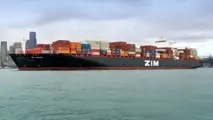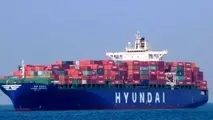Asian shippers are ready for more VSAT enabled digitalization

Many Asian shipping companies are ready to embrace the increased capacity and greater data usage enabled by maritime VSAT, according to a recent Marlink survey. Marlink initiated the survey to further deepen its understanding of the Asian markets, align its service development roadmap and ensure the specific needs of Asian operators are met with flexible, cost-effective and innovative new communication services.
A key finding of the survey showed that a clear majority of owners believe that greater use of satcom can deliver a competitive edge to their business operations and bottom line results. It is expected that Broadband communications, such as VSAT will continue to stir the interest of ship owners and decision makers because of its ability to support complex applications related to ship operational efficiency and commercial operations as well as crew communications.
The double-blind survey, where neither Marlink nor the respondent were identified to each other, showed how critical email communication is for all ship owners in the region. However, the survey showed that the use of electronic chart updates and remote equipment monitoring has started driving requirements for more bandwidth on board of Asian owned fleets. Operational efficiency and commercial benefits that set them apart from competition are areas of developing interest among the respondents.
“The survey points to a growing acceptance of digitalisation and smart shipping in the Asian shipping community, which has traditionally been viewed as technologically conservative by some sections of the maritime industry,” said Tore Morten Olsen, President Maritime, Marlink. “We already see the evidence of this within our expanding Asian customer-base and are actively developing solutions to support customer demand in the region and of course, globally.”
The survey also assessed respondents’ attitudes to crew connectivity. Significant differences were noted across the region. In Singapore, Hong Kong, South Korea and Japan for instance, many ship operators considered provision of connectivity to be important for crew retention. There was significant diversity in approaches to crew welfare, ranging from careful introduction of restricted data access on board to fully managed Internet access over on board Wi-Fi and daily updated content access through the crews’ own devices on content delivery platforms, such as Marlink’s XChange Media.
Flexibility is key to Marlink’s support for Asian and global customers, ensuring high availability of crew communication facilities on board, with easy, remote account management and billing, minimising administration for the Captain and ship owner.
“Perhaps in contrast to the common perception, the attitude to provision of crew services via satellite is generally positive within the Asian shipping community, with the Maritime Labour Convention and the need to retain crew as the main drivers,” said Olsen. “While not all Asian owners have the same outlook, it’s positive to see that crew welfare is high on the agenda for many of those surveyed and important to note that providing personal communication facilities on Sealink VSAT services can be low-cost or even cost-neutral depending on the approach.”
Ultimately, the survey revealed that a strong majority of the Asian shipping community (70%) believe that satcom can deliver a competitive edge. Given the benefits of VSAT for improving the performance of key business applications as well as crew connectivity, it is likely that VSAT deployment in Asia will continue to expand significantly in the future.



